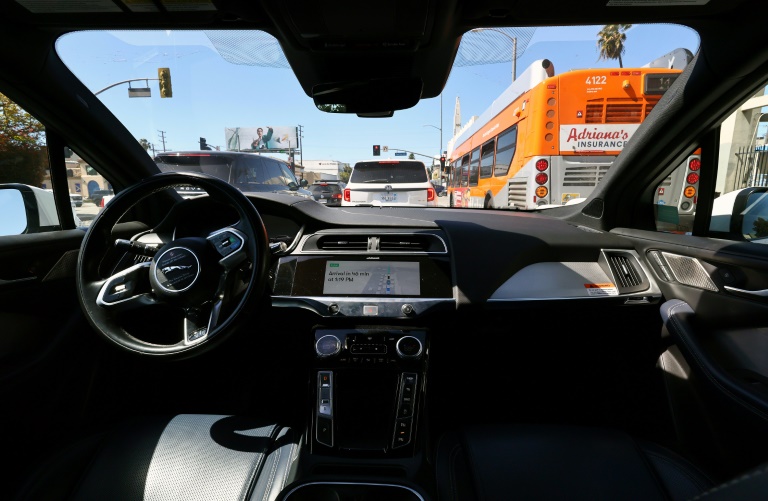Fully autonomous cars are still years away from hitting the road, but internationally agreed rules for their use could be ready by mid-2026, the United Nations says.
Safety concerns and the cost of developing advanced systems have slowed progress on autonomous vehicles, but regulatory work is progressing steadily, the UN said.
“While the hype may be slowly fading, actual serious regulatory work is progressing,” UNECE Deputy Executive Secretary Dmitry Mariyasin told reporters.
The World Forum for Harmonization of Vehicle Regulations, founded in 1952, meets three times a year, bringing together countries, automakers and technology giants. This week’s meeting in Geneva is the flagship annual gathering.
The forum takes place under UNECE, the UN Economic Commission for Europe, which shapes the legal framework for domestic transport.
– Traffic rules –
Richard Damm, chairman of the Working Party on Automated/Autonomous and Connected Vehicles (GRVA), said the new UN rules on driver assistance systems were adopted in February and will come into force in September.
In addition, “we plan to have a globally harmonized regulation for automated driving systems (ADS) ready by mid-2026,” he said.
Unlike some areas where regulations come long after the rollout of new technology, GRVA Secretary Francois Guichard said settling the rules first was in line with previous developments in the automotive sector.
He said regulations for electric vehicles were in place before they hit the market and the framework for hydrogen vehicles is now also in place should the industry move to mass production.
– Five levels –
There are five levels of automation, with the lower levels already becoming commonplace.
At level 2, drivers are expected to pay attention to traffic.
At level 3, the driver does not drive himself when the automatic systems are activated, but can intervene at any time and must take over control at the request of the system.
At Level 4, a driver does not have to be prepared to intervene quickly, at least in limited areas, while at Level 5 vehicles are fully autonomous.
Guichard said Level 1 and 2 technology is likely in half of all new vehicles; “Level 3 is still rare and Level 4 does not exist as a mass-produced product,” he said.
Damm said the Level 3 and 4 systems were “much more expensive,” so deeper driver assistance technology at Level 2 will likely come first, as a bridge to the next levels.
– Road safety –
“Is there a future for autonomous cars? I can clearly answer this with ‘yes’,” said Damm.
“This technology will come, and it is already partly on its way, even though it is not yet penetrating the mass market. It will take a number of years before we see it on the mass market, because we have to solve several problems.”
Public safety concerns remain the top priority in establishing the regulatory framework.
Approximately 1.2 million road deaths occur every year, while another 50 million people are injured.
“We don’t know yet whether autonomous vehicles will be more of a problem or more of a solution,” says Mariyasin.
rhym/vog/gv

